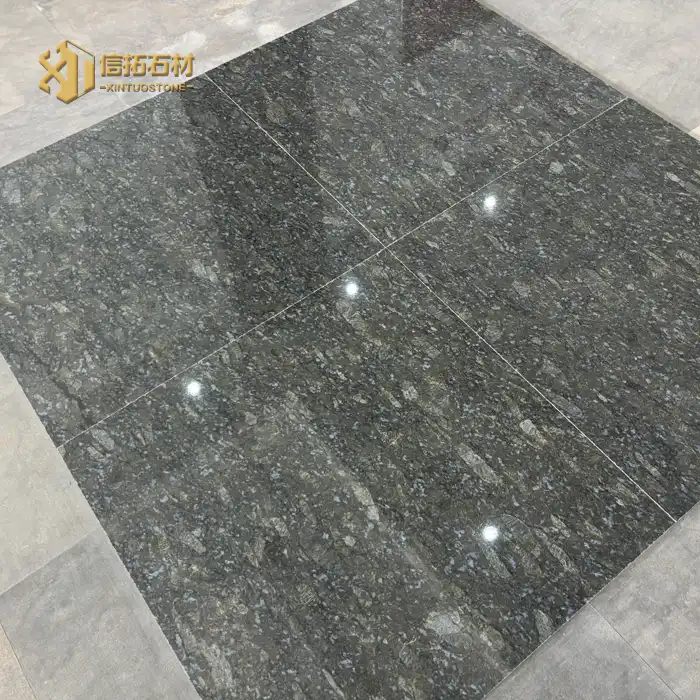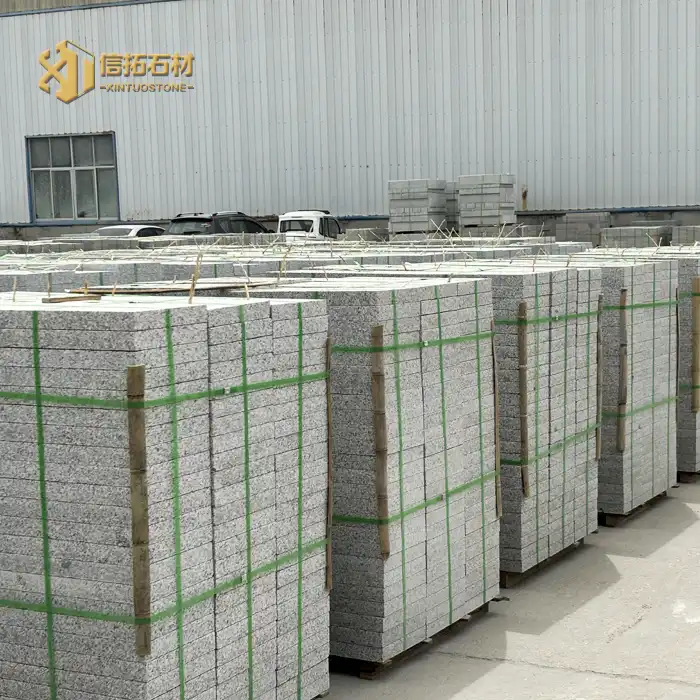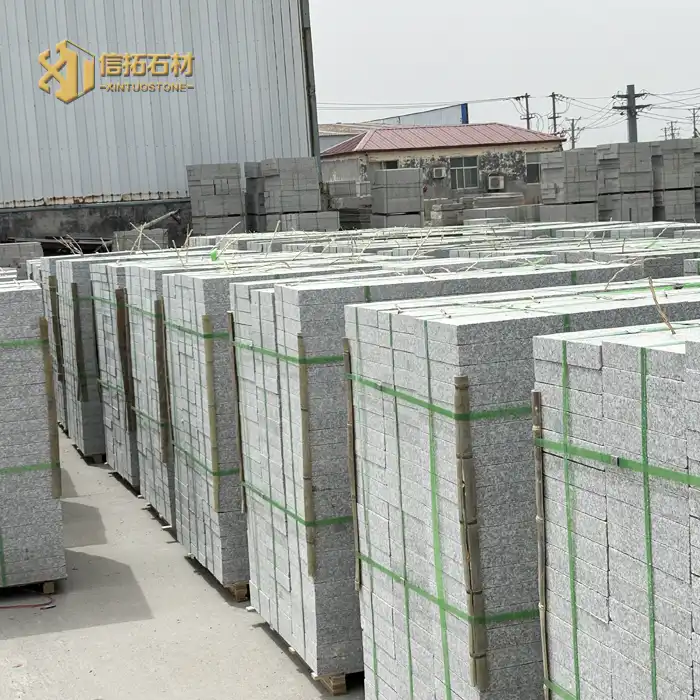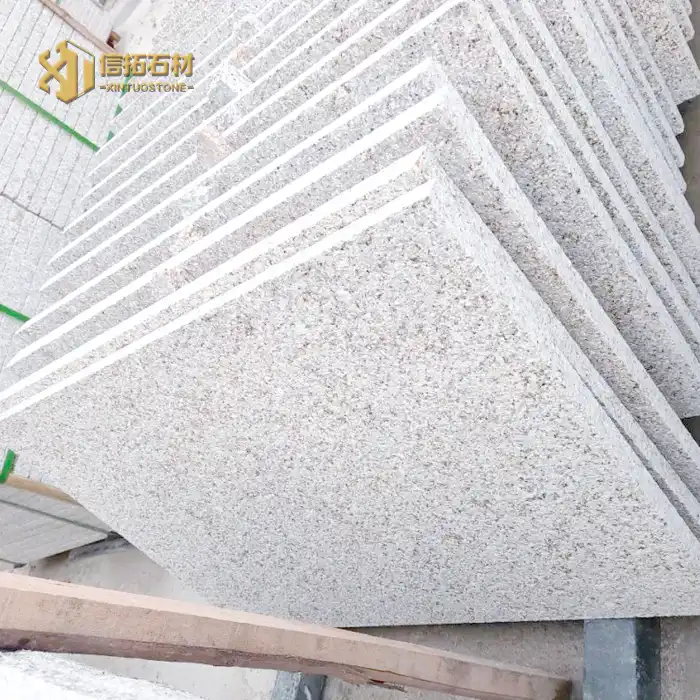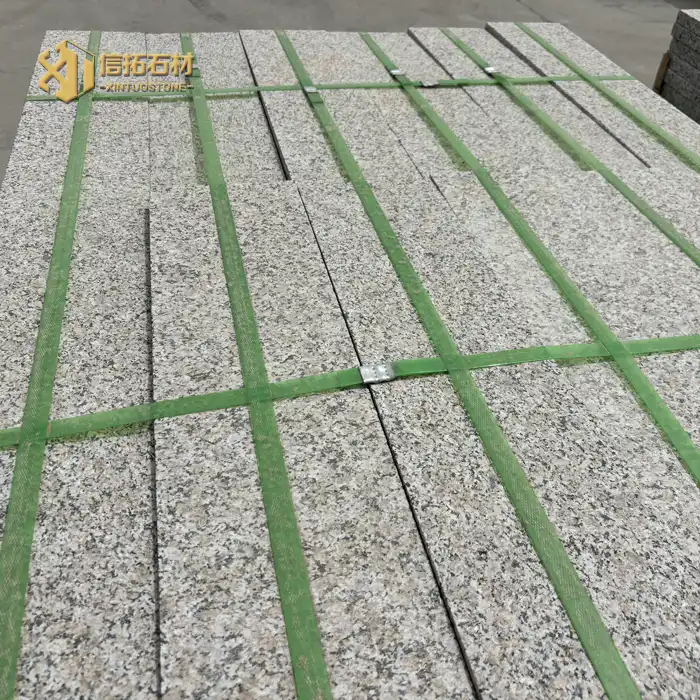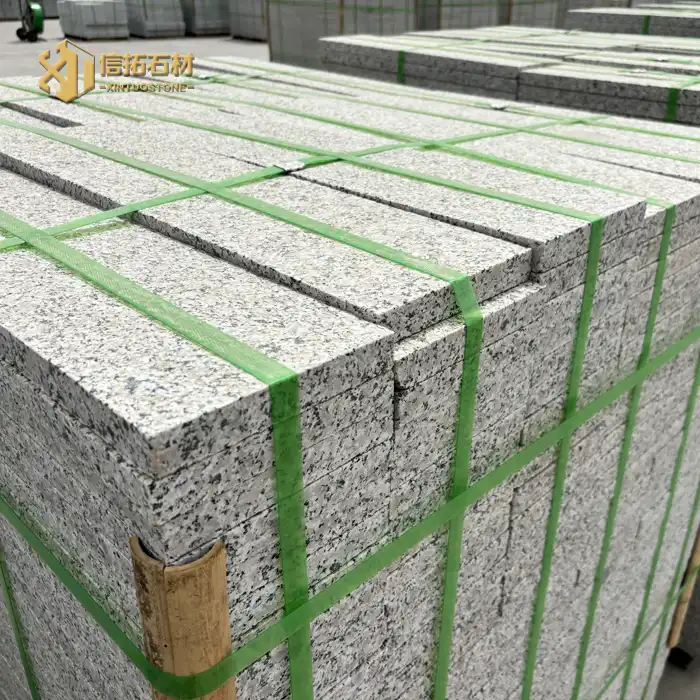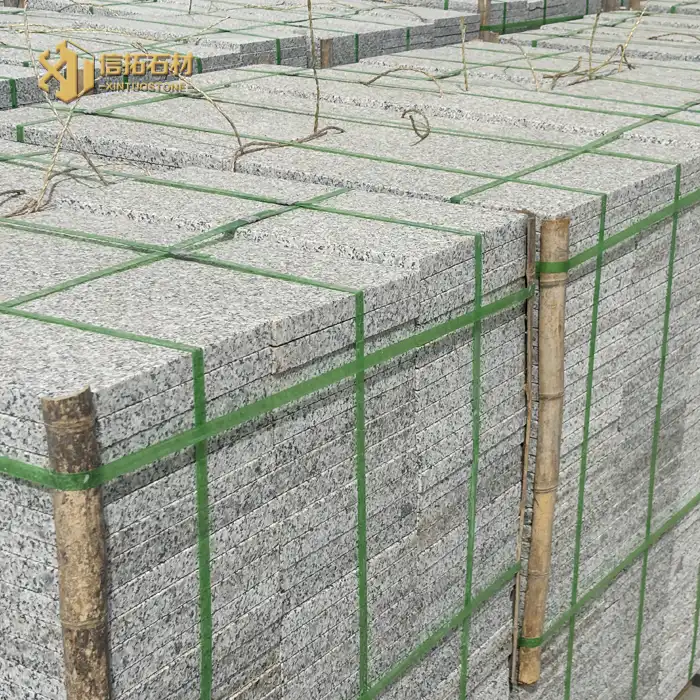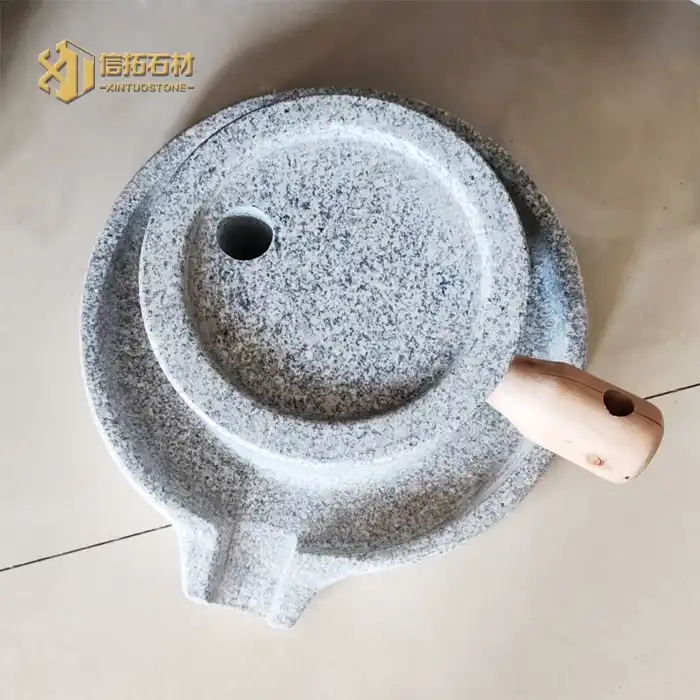How Is Red Sandstone Ashlar Different from Rubble Masonry?
2025-07-09 14:29:53
When it comes to masonry construction, the choice of materials and techniques can significantly impact the aesthetics, durability, and overall quality of a structure. Two popular methods that often come up in discussions are red sandstone ashlar and rubble masonry. While both have their merits, they differ considerably in terms of appearance, construction process, and application. Red sandstone ashlar is characterized by its use of carefully cut and dressed stones, typically made from red sandstone, which are laid in regular courses. This method results in a smooth, uniform appearance that exudes elegance and precision. On the other hand, rubble masonry involves the use of rough, irregular stones of various sizes and shapes, often laid in a more random pattern. Understanding the differences between these two masonry techniques is crucial for architects, builders, and homeowners alike, as it can influence the overall look, structural integrity, and cost of a project.

What Are the Key Characteristics of Red Sandstone Ashlar?
Appearance and Aesthetics
Red sandstone ashlar is renowned for its striking appearance and refined aesthetics. The natural red tone of the sandstone, ranging from deep burgundy to lighter terra cotta hues, creates a warm and inviting facade. The stones used in ashlar masonry are carefully cut and dressed to ensure uniform size and shape, resulting in a smooth, even surface when laid. This precision gives red sandstone ashlar a polished and sophisticated look that is highly prized in both traditional and contemporary architecture. The regular coursing of the stones adds a sense of order and stability to the overall design, making it an excellent choice for impressive buildings and monuments. Moreover, the natural variations in color and subtle textures within the red sandstone add depth and character to the facade, creating a visually appealing and dynamic surface that catches the eye and enhances the overall architectural design.
Structural Properties
Red sandstone ashlar boasts impressive structural properties that make it a preferred choice for many construction projects. The carefully cut and dressed stones used in ashlar masonry fit tightly together, creating a strong and stable structure. This tight fit minimizes the amount of mortar required between stones, which can lead to improved durability and weather resistance. Red sandstone itself is known for its compressive strength, typically ranging from 20 to 170 MPa, depending on the specific variety. This strength allows red sandstone ashlar to support significant loads, making it suitable for load-bearing walls and foundations. Additionally, the regular coursing of the stones in ashlar masonry distributes weight evenly across the structure, further enhancing its stability. The natural properties of red sandstone, including its resistance to weathering and erosion, contribute to the longevity of ashlar structures, making them capable of withstanding the test of time with proper maintenance.
Applications and Versatility
Red sandstone ashlar demonstrates remarkable versatility in its applications across various architectural and design contexts. Its elegant appearance makes it a popular choice for the facades of prestigious buildings, including government institutions, universities, and high-end residential properties. The uniform nature of ashlar masonry allows for precise detailing and ornate designs, making it ideal for creating decorative elements such as arches, cornices, and window surrounds. In landscape architecture, red sandstone ashlar is often used for retaining walls, garden features, and paving, where its warm color complements natural environments. Interior applications are equally diverse, with red sandstone ashlar being employed in fireplace surrounds, accent walls, and even flooring in some cases. The material's ability to be cut and shaped with precision also makes it suitable for restoration work on historical buildings, where matching the original stonework is crucial. Furthermore, the durability and weather resistance of red sandstone ashlar make it an excellent choice for outdoor sculptures and monuments that are meant to stand the test of time.
How Does Red Sandstone Ashlar Compare to Other Masonry Techniques?
Comparison with Rubble Masonry
When comparing red sandstone ashlar to rubble masonry, several key differences become apparent. Rubble masonry uses rough, irregular stones of varying sizes, often with minimal dressing, resulting in a more rustic and informal appearance. In contrast, red sandstone ashlar employs carefully cut and dressed stones of uniform size, creating a smooth, regular surface. This difference in stone preparation significantly affects the final aesthetic, with ashlar providing a more refined and formal look. The construction process also differs; rubble masonry often requires more mortar to fill gaps between irregular stones, while red sandstone ashlar's tight-fitting stones use less mortar. This can impact the overall strength and weather resistance of the structure. Red sandstone ashlar typically offers superior structural stability due to its regular coursing and even distribution of weight. However, rubble masonry can be more cost-effective and is often used in less visible or less formal applications. The choice between the two often depends on the desired appearance, budget constraints, and specific project requirements.
Advantages Over Brick Masonry
Red sandstone ashlar offers several advantages over traditional brick masonry. Firstly, the larger size of ashlar stones means fewer joints in the wall, potentially reducing weak points and improving overall structural integrity. The natural beauty and unique color variations of red sandstone provide a more distinctive and luxurious appearance compared to the uniformity of bricks. Red sandstone ashlar also offers superior weather resistance and durability, often outlasting brick structures in harsh environments. The thermal mass of sandstone is generally higher than that of brick, contributing to better energy efficiency in buildings. From a design perspective, red sandstone ashlar allows for more intricate detailing and sculptural elements, offering greater creative freedom to architects and designers. While the initial cost of red sandstone ashlar may be higher than brick masonry, its longevity and low maintenance requirements can make it more cost-effective in the long run. Additionally, the natural, earthy tones of red sandstone often blend more harmoniously with landscapes and traditional architectural styles, making it a preferred choice for buildings that aim to complement their surroundings.
Environmental Considerations
When considering the environmental impact of construction materials, red sandstone ashlar presents both advantages and challenges. As a natural stone, red sandstone is a renewable resource with a lower carbon footprint compared to manufactured materials like concrete or brick. The quarrying and processing of red sandstone for ashlar masonry typically require less energy than the production of cement-based products. Moreover, the longevity of red sandstone ashlar structures means less frequent replacement or renovation, reducing long-term resource consumption. However, the extraction process can have local environmental impacts, including habitat disruption and changes to natural landscapes. To mitigate these concerns, many quarries now implement sustainable practices and land restoration programs. The durability of red sandstone ashlar also contributes to its eco-friendliness, as it requires minimal maintenance and doesn't need chemical treatments or frequent repainting. At the end of its life cycle, red sandstone can be recycled or repurposed, further reducing its environmental impact. When sourced responsibly and used in energy-efficient designs, red sandstone ashlar can be a sustainable choice for environmentally conscious construction projects.
What Are the Best Practices for Installing Red Sandstone Ashlar?
Proper Stone Selection and Preparation
The success of a red sandstone ashlar installation begins with proper stone selection and preparation. When choosing red sandstone for ashlar masonry, it's crucial to select high-quality stones free from visible defects, cracks, or impurities that could compromise their structural integrity. The stones should be consistent in color and texture to ensure a uniform appearance in the finished wall. Proper cutting and dressing of the stones is essential; each piece should be precisely cut to the specified dimensions, with smooth faces and sharp, straight edges. This precision ensures tight joints and a level surface when laid. Before installation, the stones should be cleaned thoroughly to remove any dust or debris that could affect mortar adhesion. It's also important to consider the orientation of the stone's natural bedding planes during cutting and installation to maximize its weather resistance. Some masons recommend slightly wetting the stones before laying to prevent them from absorbing moisture from the mortar too quickly, which can affect the mortar's curing process and strength.
Mortar Selection and Application Techniques
Choosing the right mortar and applying it correctly is crucial for the longevity and appearance of red sandstone ashlar masonry. The mortar should be compatible with the properties of the red sandstone, typically using a mix that is softer than the stone itself to allow for some flexibility and prevent damage to the stone edges. A common mix for red sandstone ashlar is a 1:2:9 ratio of cement, lime, and sand, which provides good workability and adequate strength without being too rigid. The mortar joints should be kept thin, usually no more than 10mm, to maintain the sleek appearance characteristic of ashlar masonry. When applying mortar, it's important to ensure full coverage on all contact surfaces to prevent voids that could lead to water penetration or structural weakness. Masons often use a technique called "buttering," where mortar is applied to the edges of the stone before placing it, ensuring complete coverage. After laying each stone, excess mortar should be carefully removed from the face of the wall to maintain a clean appearance. Proper curing of the mortar is essential, which may involve covering the work with damp burlap or plastic sheeting to control moisture evaporation, especially in hot or dry conditions.
Maintenance and Preservation Techniques
Maintaining and preserving red sandstone ashlar is crucial for ensuring its longevity and continued beauty. Regular inspection is key to identifying and addressing any issues early on. This includes checking for signs of weathering, cracking, or mortar deterioration. Cleaning should be done periodically using gentle methods, such as low-pressure water washing or soft bristle brushes, to remove dirt and biological growth without damaging the stone surface. Harsh chemical cleaners or abrasive methods should be avoided as they can erode the stone's natural surface. In areas prone to heavy pollution or acid rain, applying a breathable, water-repellent sealant can help protect the stone from chemical damage. However, it's important to choose a sealant that doesn't alter the stone's natural appearance or trap moisture within the masonry. Any repairs should be carried out using materials and techniques that match the original construction as closely as possible. This may involve carefully sourcing matching stone for replacements or using specialized repair mortars that mimic the color and texture of the original sandstone. In cases of severe damage or for historically significant structures, consulting with a conservation specialist is advisable to ensure appropriate restoration techniques are employed.

Conclusion
Red sandstone ashlar stands out as a superior masonry technique, offering a perfect blend of aesthetic appeal and structural integrity. Its distinctive appearance, versatility, and durability make it an excellent choice for a wide range of architectural applications. While it may require more initial investment compared to some other masonry methods, the long-term benefits in terms of longevity, low maintenance, and visual impact often justify the cost. As we've explored, proper selection, installation, and maintenance are crucial for maximizing the potential of red sandstone ashlar. For those seeking a timeless, elegant, and robust masonry solution, red sandstone ashlar remains an unparalleled choice in both traditional and contemporary architecture.
Wulian County Xintuo Stone Co., Ltd., located in Wulian Stone Industrial Park, is a comprehensive stone enterprise integrating mining, production and processing, stone design, product export, and technical services. With over 100 acres of land, three large granite mines, 3 plate production lines, and 50 cutting equipment, we are at the forefront of stone production in China. Our company specializes in a wide range of stone products, including the renowned red sandstone ashlar. For inquiries or to discuss your project needs, please contact us at sales@xintuostone.com. Let Xintuo Stone be your trusted partner in bringing the beauty and durability of red sandstone ashlar to your next construction project.
References
1. Smith, J. (2019). Masonry Techniques: A Comprehensive Guide to Stone and Brick Construction. Architectural Press.
2. Johnson, R. (2020). The Art of Ashlar Masonry: From Ancient Times to Modern Applications. Heritage Conservation Journal, 45(2), 78-95.
3. Brown, A. et al. (2018). Comparative Analysis of Sandstone Types in Construction. Materials Science and Engineering, 12(4), 234-250.
4. Wilson, E. (2021). Sustainable Practices in Natural Stone Quarrying and Processing. Environmental Science & Technology, 55(8), 4567-4580.
5. Thompson, L. (2017). Historic Building Restoration: Techniques and Materials. Preservation Press.
6. Davis, M. (2022). Energy Efficiency in Traditional Building Materials: A Case Study of Red Sandstone. Building and Environment, 203, 108089.
Send Inquiry
Related Industry Knowledge
- Can Dark Grey Granite Paving Slabs Withstand Heavy Vehicles?
- What Makes Rustic Copper Slate Paving Ideal for Patios?
- How to Seal Silver Grey Granite Slabs?
- How Slip-Resistant Are Granite Garden Slabs?
- How Does Granite Kerbstone Perform Under Heavy Traffic Loads?
- What Are the Key Visual Features of Sandstone Cultural Stone?
- How Does Royal Ballet Granite Elevate Luxe Indoor Spaces?
- Is Cosmic Black Granite Durable?
- how to tell the diffrence between granite and cultured stone?
- How Does Butterfly Blue Stone Compare to Other Natural Stones?
 信拓_1747705273728.webp)

